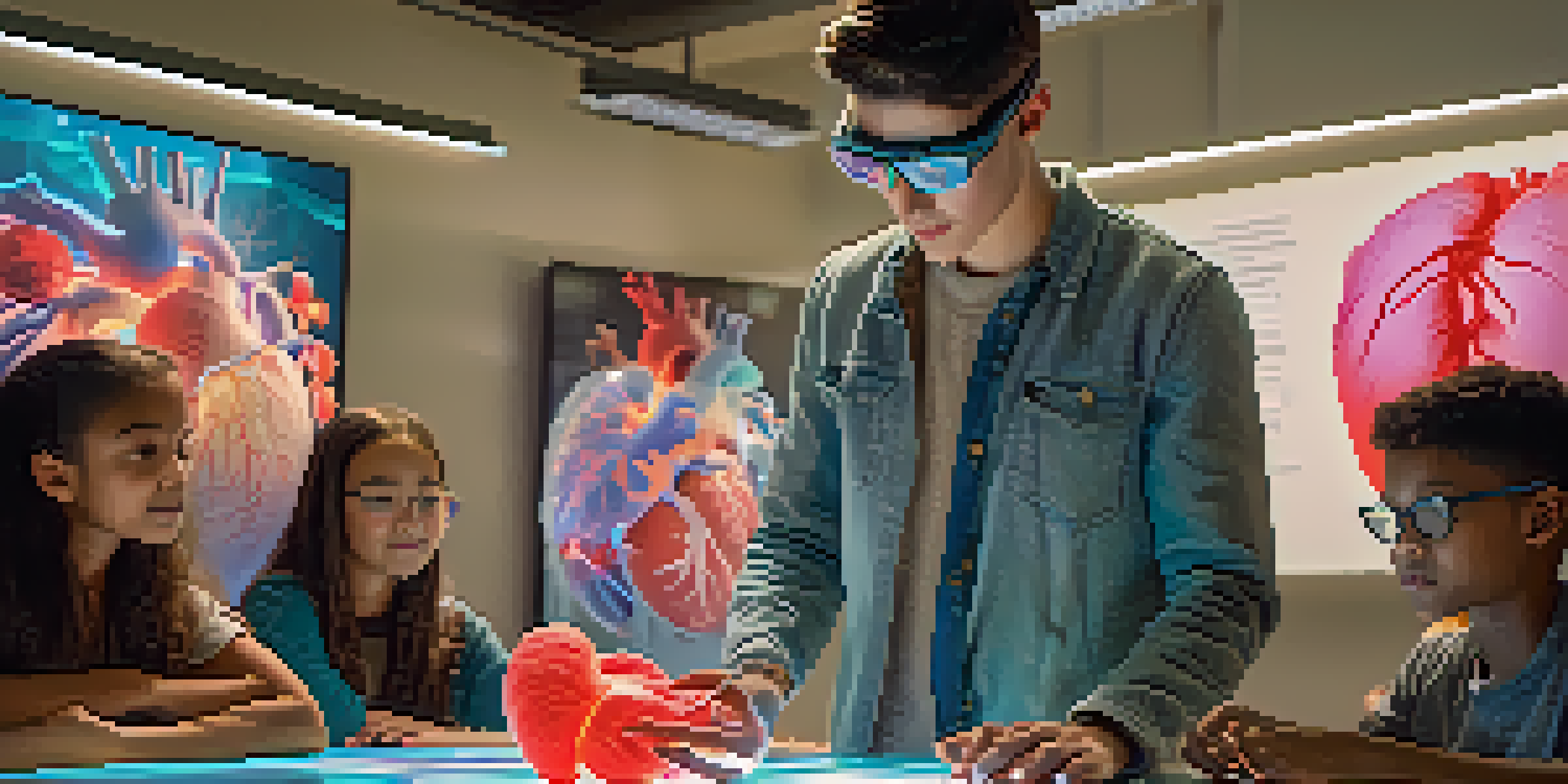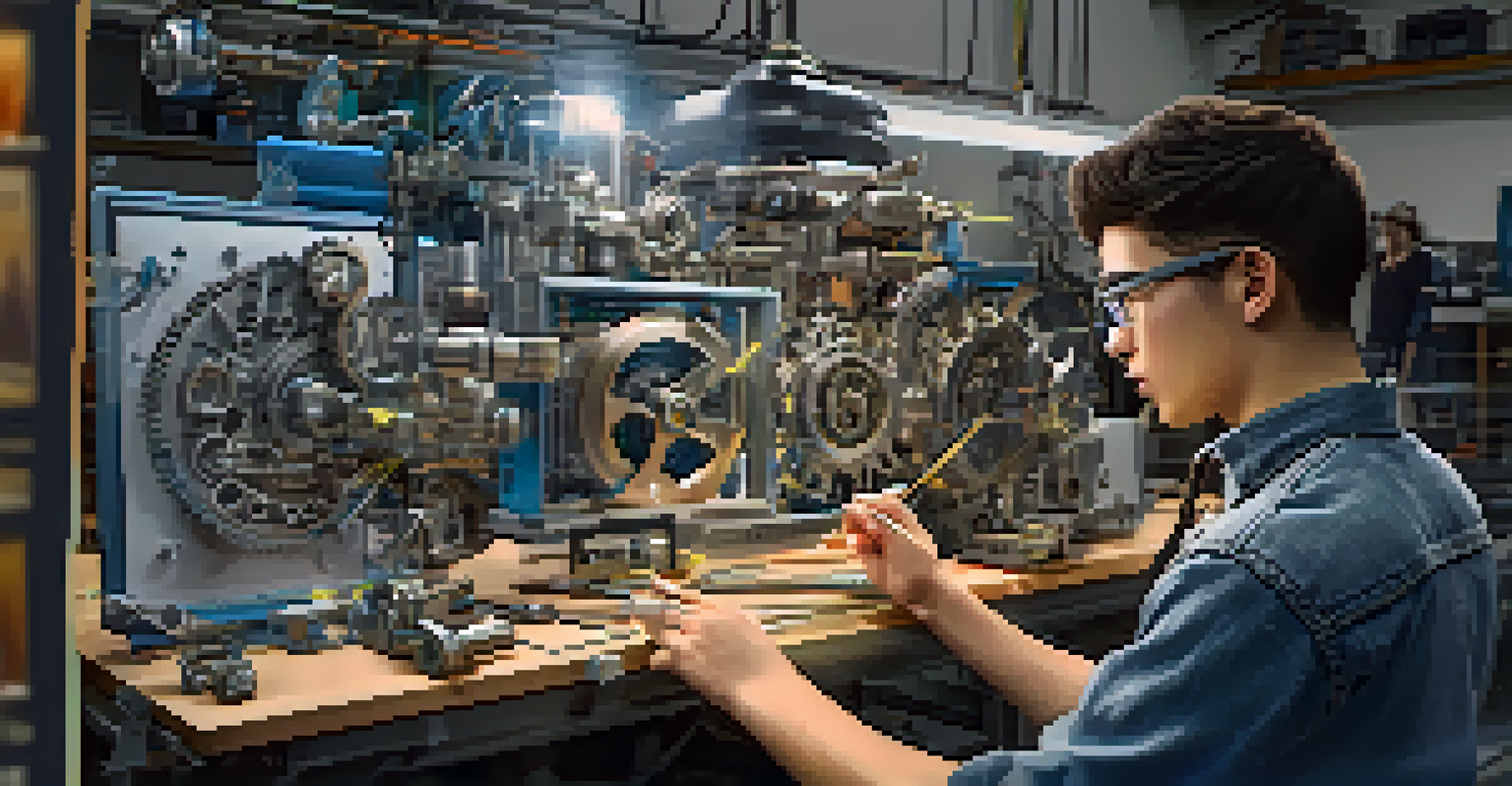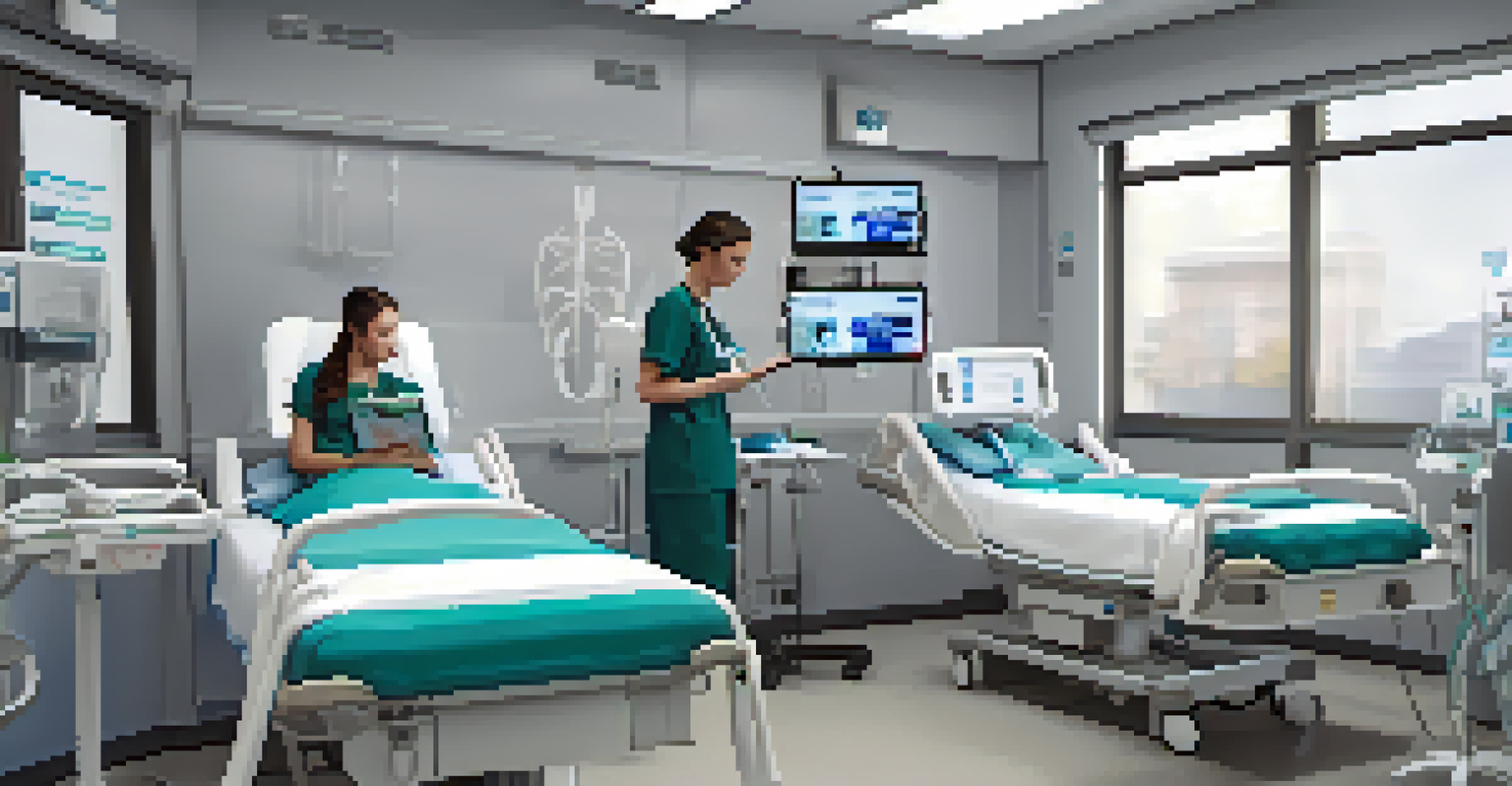Augmented Reality in Professional Skills Training for Students

Understanding Augmented Reality in Education
Augmented Reality (AR) is a technology that overlays digital information onto the real world, creating an interactive experience. In the realm of education, this means transforming traditional learning methods into engaging, hands-on experiences. For students, this can involve viewing 3D models of complex structures or interacting with simulations that enhance their understanding of professional skills.
Augmented reality is not just a tool; it's a transformative experience that can change how we learn and interact with the world around us.
By blending the physical and digital environments, AR helps students visualize concepts that are otherwise difficult to grasp. For instance, a medical student can practice surgical techniques on a simulated patient rather than a traditional textbook. This active learning approach not only makes studying more engaging but also improves retention of information.
Moreover, AR can cater to different learning styles, making it a versatile tool in education. Visual learners benefit from seeing models, while kinesthetic learners can manipulate virtual objects. This adaptability ensures that more students can grasp the material effectively, preparing them for real-world applications.
Enhancing Technical Skills with AR Training
One of the most significant advantages of AR in professional skills training is its ability to enhance technical skills. For example, engineering students can use AR to visualize complex machinery and understand how different components work together. This hands-on approach allows them to grasp intricate concepts without the risks associated with real-life machinery.

AR simulations can also replicate scenarios that professionals might face in the field, allowing students to practice in a risk-free environment. An aviation student, for instance, can simulate a flight without ever leaving the ground. This practice builds confidence and competence, ensuring that they are well-prepared for actual situations.
AR Transforms Learning Experiences
Augmented Reality enhances education by making complex concepts interactive and engaging for students.
In fields like nursing, AR can provide realistic patient care scenarios that allow students to develop their skills. They can practice administering medication or performing assessments on virtual patients, bridging the gap between theory and practice. This experiential learning solidifies their training and enhances their skill set.
Real-world Applications of AR in Training
AR has already found its way into various industries, showcasing its effectiveness in professional training. For instance, companies in the construction sector use AR to train employees on safety protocols and equipment usage. By overlaying safety instructions directly onto the machinery, workers can learn in a context that mirrors their actual work environment.
The future of education is not just about knowledge acquisition; it’s about creating environments where students can actively engage with and manipulate what they learn.
Moreover, retail businesses have adopted AR for employee training, allowing staff to interact with virtual products and customer scenarios. This immersive experience helps employees understand customer service dynamics better and prepares them for real interactions. The practical application of AR ensures that employees are not just familiar with theoretical knowledge but can also apply it effectively.
As more industries recognize the benefits of AR training, the demand for skilled professionals who can navigate these technologies increases. Students trained using AR will find themselves well-equipped to enter the workforce, making them more competitive candidates in their respective fields.
The Benefits of Interactive Learning with AR
Interactive learning is at the heart of AR's appeal in professional skills training. Students are no longer passive recipients of information; instead, they actively engage with the material. This interactivity not only makes learning more enjoyable but also fosters critical thinking and problem-solving skills.
For instance, when students can manipulate 3D models or participate in simulations, they are encouraged to experiment and explore different outcomes. This hands-on experience is vital in developing a deeper understanding of complex subjects. Furthermore, it allows for immediate feedback, enabling students to learn from their mistakes in real-time.
Practical Skills Through Simulations
AR allows students to practice real-world skills in a risk-free environment, boosting their confidence and competence.
The gamification aspect of AR also cannot be overlooked. By incorporating game-like elements, such as challenges and rewards, students are motivated to engage more deeply with the content. This playful approach to learning can lead to greater enthusiasm and commitment to mastering their skills.
Overcoming Challenges in AR Training Implementation
While the benefits of AR in professional skills training are clear, there are challenges to its implementation. One major hurdle is the need for technology that may not be readily available in all educational settings. Schools and institutions may struggle with the cost of AR equipment and software, limiting access for many students.
Additionally, educators must be trained to effectively integrate AR into their teaching methods. This requires not only an understanding of the technology but also a willingness to adapt traditional teaching styles. Professional development programs can help bridge this gap, ensuring that educators feel confident using AR in their classrooms.
Finally, there is a need for a robust curriculum that includes AR training. Developing content that effectively utilizes AR can be time-consuming and requires collaboration between educators, industry professionals, and technology developers. However, overcoming these challenges will ultimately lead to a more innovative and effective training environment for students.
The Future of AR in Professional Skills Training
As technology continues to evolve, the future of AR in professional skills training looks promising. We can expect to see even more sophisticated applications that enhance the learning experience. For example, advancements in artificial intelligence may allow AR systems to personalize training based on individual student needs and learning paces.
With the growing acceptance of remote learning, AR can also bridge the gap between physical and virtual classrooms. Students can engage with AR training materials from anywhere, making education more accessible. This flexibility opens up opportunities for students who may not have access to traditional training facilities.
Future of AR in Education
As AR technology advances, it promises to make learning more personalized and accessible, preparing students for the workforce.
Moreover, as industries increasingly integrate AR into their operations, educational institutions will need to keep pace. This means that students can expect to learn using tools and technologies that mirror what they'll encounter in the workplace, ensuring a seamless transition from education to employment.
Conclusion: Embracing AR for Skill Development
In conclusion, augmented reality is revolutionizing professional skills training for students by making learning more engaging, interactive, and applicable. The technology not only enhances understanding but also prepares students for real-world challenges in their respective fields. As educational institutions and industries continue to embrace AR, the potential for skill development will only expand.
By investing in AR training solutions, educators can foster a generation of learners who are equipped with the skills needed for the future. This creates a win-win situation where students become more competent and confident in their abilities, while industries benefit from a skilled workforce ready to tackle modern challenges.

Ultimately, embracing AR in professional training is not just a trend—it's a necessary evolution in education. The potential for growth and innovation is immense, and students who engage with AR will be better prepared to succeed in their careers.